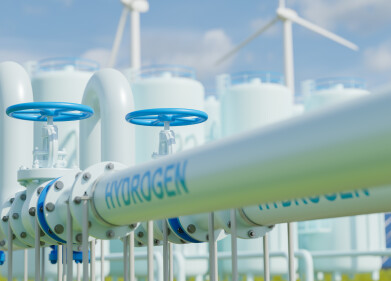Fuel for Thought
Is plastic manufacturing driving climate change more than coal?
Oct 02 2024
In 2021, the Beyond Plastics Alliance outlined the alarming reality that plastics were rapidly overtaking coal as a major source of greenhouse gas emissions. Derived from fossil fuels, plastic emits significant amounts of carbon dioxide and methane throughout its life cycle—especially during production, use, and disposal.
The report estimates that the U.S. plastics industry alone is responsible for at least 232 million tons of CO2-equivalent emissions each year, an amount comparable to the emissions from 116 coal-fired power plants. If current trends continue, by 2030, plastics could surpass coal in their contribution to global warming. This shift comes at a time when global energy markets are transitioning away from coal, leaving the fossil fuel industry increasingly reliant on plastic production as a new revenue stream.
One of the key findings of the report is that the impact of plastics on the environment is grossly underestimated. Emissions from the plastics industry are not only vast but also expected to rise. Since 2019, 42 new plastics production facilities have been built, are under construction, or are in the permitting process. These new plants are projected to increase annual emissions by another 55 million tons by 2025, equal to 27 additional coal-fired power plants.
Moreover, the report highlights how the harmful effects of plastic production are disproportionately felt by low-income communities and communities of color. More than 90% of the climate pollution generated by U.S. plastics manufacturing occurs in just 18 communities, primarily located in Texas and Louisiana. Residents of these areas, often termed "sacrifice zones," experience higher levels of pollution and associated health risks, such as respiratory diseases and cancer. People living near petrochemical plants tend to earn less and are more likely to be people of color, further compounding the environmental injustice of plastic production.
Another disturbing aspect discussed is the industry's push for "chemical recycling." This method is often touted as an advanced solution for managing plastic waste, but the report reveals that it is little more than a rebranding of incineration. Rather than turning plastic into reusable materials, chemical recycling processes largely convert plastic waste into fuels that are then burned, releasing more greenhouse gases. Far from being a climate solution, this practice worsens the problem by perpetuating plastic production and disposal.
The report also exposes the hidden climate cost of plastic waste incineration. In 2020 alone, incinerating plastic waste in municipal waste facilities released approximately 15 million tons of CO2-equivalent emissions. As the volume of plastic in the waste stream increases, so will the emissions from incineration.
Since 2021, the relationship between plastic production and climate change has continued to worsen, with plastics becoming a significant contributor to global greenhouse gas (GHG) emissions. Recent data from reports in 2024 show that plastic production, use, and waste management now account for about 4% of total global emissions. This is a considerable increase compared to earlier years, where the contribution was less emphasized. Experts predict that if the current trend continues, plastics could account for up to 19% of global GHG emissions by 2040.
A key driver of these emissions is the lifecycle of plastics, with 99% of plastics still being produced from fossil fuels. Only 1–1.5% are derived from bio-based sources, while less than 10% of plastics are recycled. This reliance on fossil fuels for plastic production makes it a critical issue in both climate change and environmental pollution. Furthermore, plastics contribute to GHG emissions not only during production but also during disposal, with incineration and landfills emitting substantial amounts of CO2 and methane.
Global action is underway to address this crisis. In 2022, the United Nations Environment Assembly (UNEA) initiated a legally binding global treaty to end plastic pollution, which is expected to be finalized by the end of 2024. This agreement aims to address the full lifecycle of plastics, from production to disposal, by encouraging a circular economy. If successfully implemented, this treaty could reduce plastic pollution by 80% by 2040, cut GHG emissions, and create new jobs, particularly in waste management and recycling sectors in the Global South.
Digital Edition
PIN 25.4 Aug/Sept
September 2024
Analytical Instrumentation - Novel and Rapid LSC method for the analysis of biogenic carbon in fuels Measurement and Testing - Matrix evaluation on the Xplorer-V with Vectra autosampler accordi...
View all digital editions
Events
Oct 07 2024 Cape Town, South Africa
13th St Petersburg International Gas Forum
Oct 08 2024 St. Petersburg, Russia
Oct 08 2024 Kuala Lumpur, Malaysia
Oct 08 2024 St. Petersburg, Russia
Oct 09 2024 Bologna, Italy


















